-
 Bitcoin
Bitcoin $101,898.5005
-0.75% -
 Ethereum
Ethereum $2,258.1125
-1.07% -
 Tether USDt
Tether USDt $1.0004
0.01% -
 XRP
XRP $2.0178
-2.93% -
 BNB
BNB $624.0243
-1.53% -
 Solana
Solana $134.3298
-0.90% -
 USDC
USDC $0.9999
0.01% -
 TRON
TRON $0.2675
-2.05% -
 Dogecoin
Dogecoin $0.1538
-1.96% -
 Cardano
Cardano $0.5482
-1.11% -
 Hyperliquid
Hyperliquid $35.5636
5.45% -
 Bitcoin Cash
Bitcoin Cash $453.4902
-1.66% -
 Sui
Sui $2.5134
-2.97% -
 UNUS SED LEO
UNUS SED LEO $9.1292
1.77% -
 Chainlink
Chainlink $11.8457
-1.60% -
 Stellar
Stellar $0.2312
-2.73% -
 Avalanche
Avalanche $16.9721
0.29% -
 Toncoin
Toncoin $2.7549
-3.82% -
 Shiba Inu
Shiba Inu $0.0...01081
-1.10% -
 Litecoin
Litecoin $80.8250
-0.71% -
 Hedera
Hedera $0.1374
0.21% -
 Monero
Monero $305.4827
-2.36% -
 Ethena USDe
Ethena USDe $1.0006
0.00% -
 Dai
Dai $1.0000
-0.01% -
 Polkadot
Polkadot $3.2085
-3.12% -
 Bitget Token
Bitget Token $4.0845
-3.13% -
 Uniswap
Uniswap $6.3353
-1.63% -
 Pi
Pi $0.5085
-0.70% -
 Pepe
Pepe $0.0...08913
-3.82% -
 Aave
Aave $232.7090
-0.58%
How to read WR weekly and monthly lines? How does WR resonate with multiple cycles?
Understanding WR on weekly and monthly charts is vital for crypto traders to spot trends and reversals, enhancing decision-making across multiple cycles.
May 24, 2025 at 12:28 am
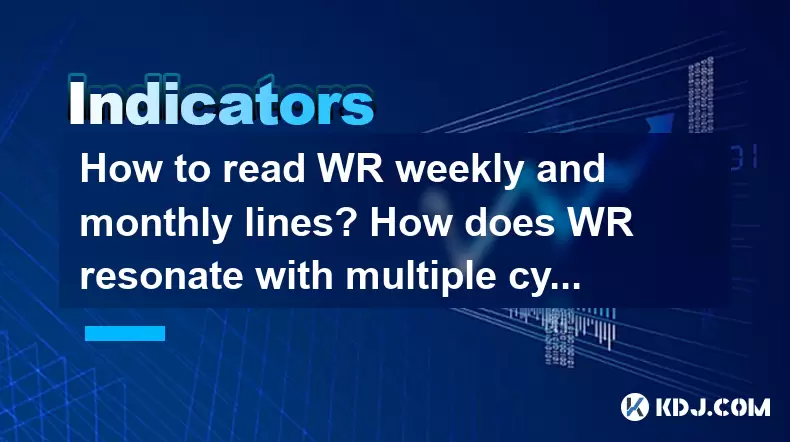
Understanding how to read WR (Williams' %R) weekly and monthly lines and how WR resonates with multiple cycles is crucial for cryptocurrency traders looking to make informed decisions. WR, or Williams' %R, is a momentum indicator that measures overbought and oversold levels. In the context of cryptocurrency trading, being able to interpret WR on different time frames, such as weekly and monthly, can provide valuable insights into market trends and potential reversal points.
What is Williams' %R (WR)?
Williams' %R is a technical indicator developed by Larry Williams to identify overbought and oversold conditions in the market. The formula for WR is as follows:
[ \text{WR} = \frac{\text{Highest High} - \text{Close}}{\text{Highest High} - \text{Lowest Low}} \times -100 ]
The values of WR range from 0 to -100. A reading above -20 is typically considered overbought, while a reading below -80 is considered oversold. In the cryptocurrency market, these levels can help traders anticipate potential price reversals.
Reading WR on Weekly Lines
When analyzing WR on a weekly basis, traders can gain insights into longer-term trends and momentum shifts. Here's how to read WR on weekly lines:
- Identify the Weekly WR Line: Plot the WR indicator on your weekly chart. The weekly WR line will oscillate between 0 and -100, reflecting the momentum of the cryptocurrency over the past week.
- Monitor Overbought and Oversold Levels: Pay close attention to when the weekly WR line crosses above -20 (overbought) or below -80 (oversold). These levels can signal potential reversal points.
- Confirm with Price Action: Always confirm WR signals with price action. For instance, if the weekly WR line indicates an oversold condition, look for bullish candlestick patterns or other technical indicators to confirm the potential reversal.
- Analyze Divergence: Look for divergence between the weekly WR line and the price of the cryptocurrency. If the price is making new lows but the weekly WR line is not, this could be a bullish divergence, signaling a potential upward reversal.
Reading WR on Monthly Lines
Monthly WR lines provide even longer-term insights into market trends and momentum. Here's how to read WR on monthly lines:
- Identify the Monthly WR Line: Plot the WR indicator on your monthly chart. The monthly WR line will oscillate between 0 and -100, reflecting the momentum of the cryptocurrency over the past month.
- Monitor Overbought and Oversold Levels: Similar to weekly lines, pay attention to when the monthly WR line crosses above -20 (overbought) or below -80 (oversold). These levels can signal potential reversal points over a longer time frame.
- Confirm with Price Action: Confirm monthly WR signals with price action. If the monthly WR line indicates an overbought condition, look for bearish candlestick patterns or other technical indicators to confirm the potential reversal.
- Analyze Divergence: Look for divergence between the monthly WR line and the price of the cryptocurrency. If the price is making new highs but the monthly WR line is not, this could be a bearish divergence, signaling a potential downward reversal.
WR Resonating with Multiple Cycles
WR can resonate with multiple cycles by providing insights into different time frames simultaneously. Here's how WR can resonate with multiple cycles:
- Short-Term vs. Long-Term Cycles: By analyzing WR on daily, weekly, and monthly charts, traders can gain a comprehensive view of short-term and long-term market cycles. For instance, if the daily WR indicates an oversold condition while the weekly WR is still in a neutral range, it might suggest a short-term bounce within a longer-term downtrend.
- Confirming Signals Across Time Frames: Traders can use WR to confirm signals across different time frames. If the daily, weekly, and monthly WR lines all indicate an overbought condition, it might suggest a stronger likelihood of a significant price reversal.
- Identifying Cycle Peaks and Troughs: WR can help identify peaks and troughs across different cycles. For example, if the monthly WR line reaches an extreme level and then starts to reverse, it might indicate a major cycle peak or trough, which can be confirmed by looking at the weekly and daily WR lines.
Practical Application of WR in Cryptocurrency Trading
Applying WR in cryptocurrency trading involves a combination of technical analysis and risk management. Here's a practical approach to using WR:
- Setting Up WR on Your Trading Platform: Most trading platforms allow you to add the WR indicator to your charts. Ensure you set the correct period (daily, weekly, or monthly) for your analysis.
- Analyzing WR Across Different Time Frames: Start by analyzing the WR on the daily chart, then move to the weekly and monthly charts. Look for alignment between the signals across different time frames.
- Combining WR with Other Indicators: Use WR in conjunction with other technical indicators, such as moving averages, RSI, or MACD, to confirm signals and reduce false positives.
- Implementing Risk Management: Always use stop-loss orders and position sizing to manage risk. Even if WR signals a potential reversal, the market can still move against your position.
Examples of WR in Action
To illustrate how WR can be used in cryptocurrency trading, let's look at a couple of examples:
- Example 1: Bitcoin Weekly WR: Suppose the weekly WR line for Bitcoin crosses below -80, indicating an oversold condition. At the same time, the price of Bitcoin forms a bullish engulfing candlestick pattern. This combination of signals might suggest a potential upward reversal, prompting traders to consider entering a long position.
- Example 2: Ethereum Monthly WR: Imagine the monthly WR line for Ethereum crosses above -20, indicating an overbought condition. Simultaneously, the price of Ethereum forms a bearish shooting star candlestick pattern. This combination of signals might suggest a potential downward reversal, prompting traders to consider entering a short position or taking profits on existing long positions.
Frequently Asked Questions
Q1: Can WR be used effectively on shorter time frames like 15-minute or 1-hour charts?
Yes, WR can be used on shorter time frames, but it's important to understand that the signals will be more sensitive and prone to false positives. Shorter time frames are better suited for day trading, where quick entry and exit points are crucial. Always confirm WR signals on shorter time frames with other technical indicators and price action.
Q2: How can WR be combined with other momentum indicators like RSI?
WR and RSI (Relative Strength Index) can be used together to confirm overbought and oversold conditions. If both WR and RSI indicate an overbought condition (WR above -20 and RSI above 70), it might suggest a stronger likelihood of a price reversal. Similarly, if both indicate an oversold condition (WR below -80 and RSI below 30), it might suggest a potential upward reversal.
Q3: Is it possible to use WR to predict cryptocurrency price movements?
While WR can provide valuable insights into potential reversal points, it is not a predictive tool. It should be used as part of a broader technical analysis strategy to identify potential entry and exit points. Always combine WR with other indicators and price action to increase the accuracy of your trading decisions.
Q4: How often should I check the WR lines on different time frames?
The frequency of checking WR lines depends on your trading style. For long-term investors, checking the weekly and monthly WR lines once a week or once a month might be sufficient. For day traders, checking the daily and shorter time frame WR lines multiple times a day could be necessary. Adjust the frequency based on your trading goals and time commitment.
Disclaimer:info@kdj.com
The information provided is not trading advice. kdj.com does not assume any responsibility for any investments made based on the information provided in this article. Cryptocurrencies are highly volatile and it is highly recommended that you invest with caution after thorough research!
If you believe that the content used on this website infringes your copyright, please contact us immediately (info@kdj.com) and we will delete it promptly.
- BNB Price Check: Stablecoin Surge vs. Prediction Rollercoaster
- 2025-06-23 14:25:12
- Metaplanet's Bitcoin Bonanza: Holdings Skyrocket Amidst Market Swings
- 2025-06-23 14:25:12
- Global Meltdown, Investors, and Safe Havens: Navigating the Storm
- 2025-06-23 14:30:12
- NFT Sales Snapshot: Guild of Heroes, Polygon, and the Market's Shifting Sands
- 2025-06-23 15:25:12
- AVAX Support Holds, Eyes Potential Surge: What's Next?
- 2025-06-23 15:11:16
- Cointelegraph Under Fire: Exploits, Phishing, and the Crypto Media Minefield
- 2025-06-23 15:11:16
Related knowledge

How to read the sideways consolidation after the bottom volume and long positive line?
Jun 23,2025 at 02:28pm
Understanding the Sideways ConsolidationWhen analyzing cryptocurrency charts, sidewards consolidation refers to a phase where prices move within a narrow range without a clear upward or downward trend. This pattern often appears after significant price movements, such as a sharp increase followed by a period of equilibrium between buyers and sellers. In...
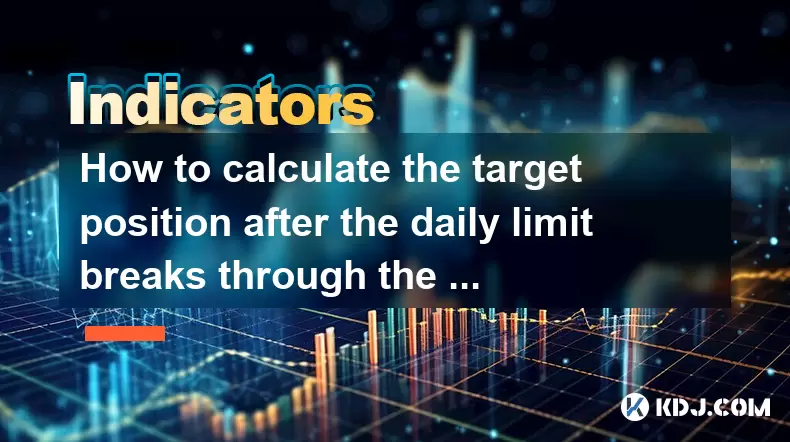
How to calculate the target position after the daily limit breaks through the previous high?
Jun 23,2025 at 02:57pm
Understanding the Daily Limit BreakthroughIn cryptocurrency trading, a daily limit typically refers to the maximum price movement allowed within a single trading day on certain exchanges. When this limit is breached, especially when it surpasses the previous high, traders often seek to calculate the target position or expected price movement following s...
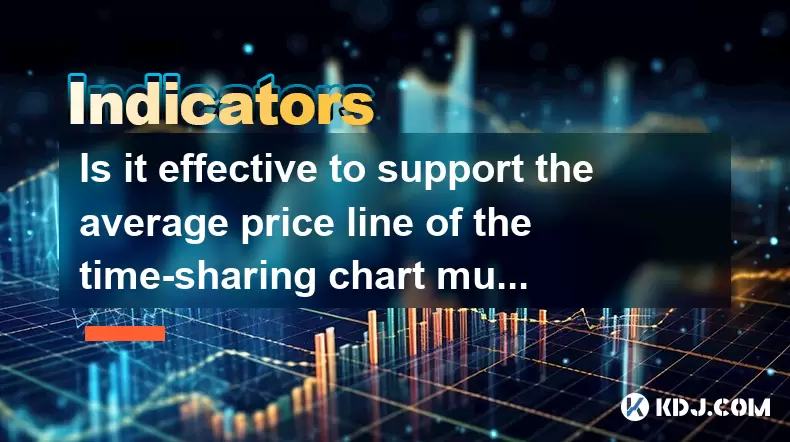
Is it effective to support the average price line of the time-sharing chart multiple times?
Jun 23,2025 at 01:36pm
Understanding the Average Price Line in Time-Sharing ChartsIn cryptocurrency trading, time-sharing charts refer to real-time price charts that display price movements over short intervals, often within a single trading day. Within these charts, the average price line, also known as the Volume Weighted Average Price (VWAP), is a commonly used technical i...
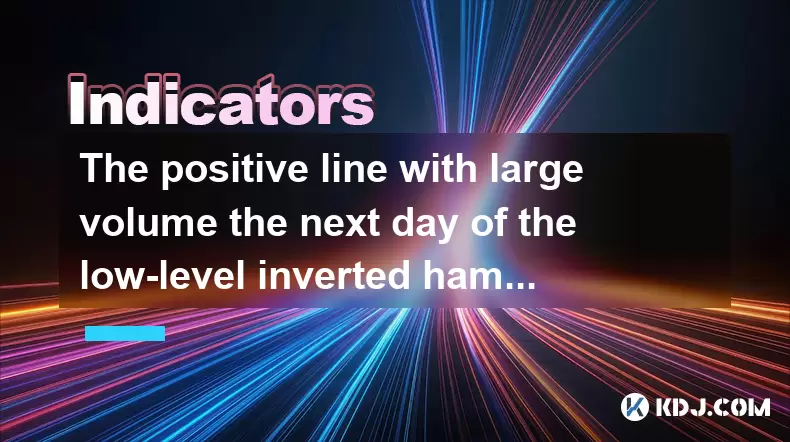
The positive line with large volume the next day of the low-level inverted hammer line confirms the reversal?
Jun 23,2025 at 01:21pm
Understanding the Low-Level Inverted Hammer LineThe inverted hammer line is a single candlestick pattern that typically appears at the end of a downtrend. It has a small real body near the bottom of the trading range and a long upper shadow, indicating that bulls attempted to push prices higher but were met with selling pressure. When this pattern forms...
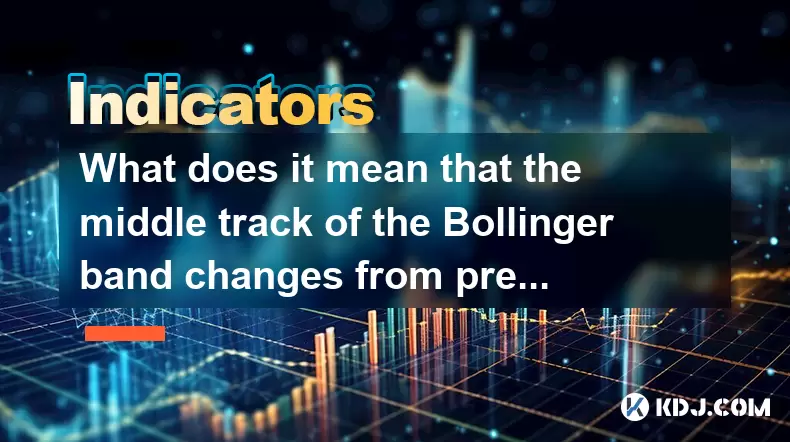
What does it mean that the middle track of the Bollinger band changes from pressure to support?
Jun 23,2025 at 03:01pm
Understanding the Bollinger Band StructureThe Bollinger Bands are a technical analysis tool used in cryptocurrency trading, developed by John Bollinger. They consist of three lines: a simple moving average (SMA) in the middle and two standard deviation bands above and below it. The middle track is typically set at 20 periods and serves as a baseline for...
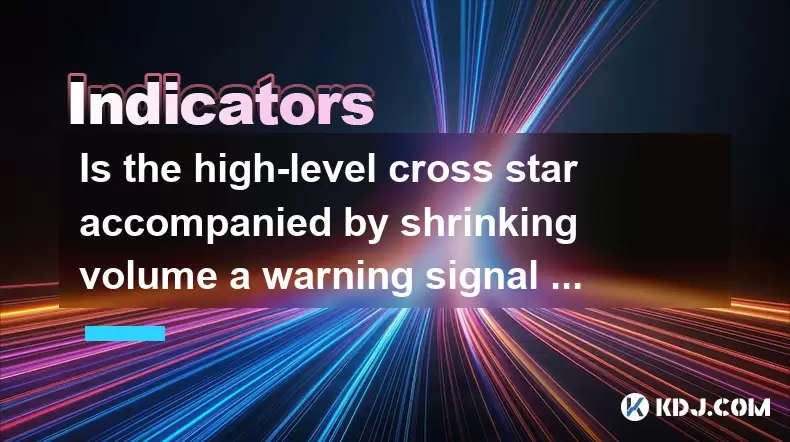
Is the high-level cross star accompanied by shrinking volume a warning signal of peaking?
Jun 23,2025 at 01:28pm
Understanding High-Level Cross Star PatternsIn the world of cryptocurrency trading, candlestick patterns are essential tools for technical analysis. One such pattern is the high-level cross star, which appears as a doji or near-doji candle at a significant resistance level. This pattern often indicates indecision in the market and can be interpreted as ...

How to read the sideways consolidation after the bottom volume and long positive line?
Jun 23,2025 at 02:28pm
Understanding the Sideways ConsolidationWhen analyzing cryptocurrency charts, sidewards consolidation refers to a phase where prices move within a narrow range without a clear upward or downward trend. This pattern often appears after significant price movements, such as a sharp increase followed by a period of equilibrium between buyers and sellers. In...

How to calculate the target position after the daily limit breaks through the previous high?
Jun 23,2025 at 02:57pm
Understanding the Daily Limit BreakthroughIn cryptocurrency trading, a daily limit typically refers to the maximum price movement allowed within a single trading day on certain exchanges. When this limit is breached, especially when it surpasses the previous high, traders often seek to calculate the target position or expected price movement following s...

Is it effective to support the average price line of the time-sharing chart multiple times?
Jun 23,2025 at 01:36pm
Understanding the Average Price Line in Time-Sharing ChartsIn cryptocurrency trading, time-sharing charts refer to real-time price charts that display price movements over short intervals, often within a single trading day. Within these charts, the average price line, also known as the Volume Weighted Average Price (VWAP), is a commonly used technical i...

The positive line with large volume the next day of the low-level inverted hammer line confirms the reversal?
Jun 23,2025 at 01:21pm
Understanding the Low-Level Inverted Hammer LineThe inverted hammer line is a single candlestick pattern that typically appears at the end of a downtrend. It has a small real body near the bottom of the trading range and a long upper shadow, indicating that bulls attempted to push prices higher but were met with selling pressure. When this pattern forms...

What does it mean that the middle track of the Bollinger band changes from pressure to support?
Jun 23,2025 at 03:01pm
Understanding the Bollinger Band StructureThe Bollinger Bands are a technical analysis tool used in cryptocurrency trading, developed by John Bollinger. They consist of three lines: a simple moving average (SMA) in the middle and two standard deviation bands above and below it. The middle track is typically set at 20 periods and serves as a baseline for...

Is the high-level cross star accompanied by shrinking volume a warning signal of peaking?
Jun 23,2025 at 01:28pm
Understanding High-Level Cross Star PatternsIn the world of cryptocurrency trading, candlestick patterns are essential tools for technical analysis. One such pattern is the high-level cross star, which appears as a doji or near-doji candle at a significant resistance level. This pattern often indicates indecision in the market and can be interpreted as ...
See all articles
























































































